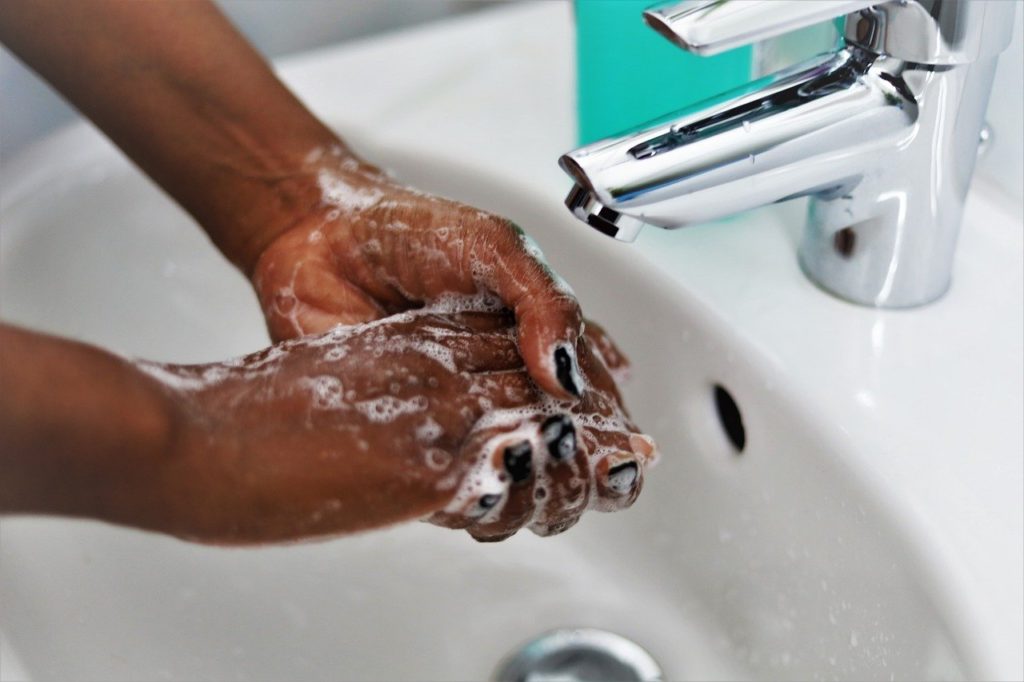We have entered a pivotal time for coronavirus.
The path we are on is becoming more perilous. Re-opening has entered Phase 1 across the state, and if you’re over 12 years old, it now includes state-wide masking requirements for indoor public places.
 If we want to avoid going back into lockdown, we need to limit contacts with people outside the home. When we do have contacts with non-household members, take care to:
If we want to avoid going back into lockdown, we need to limit contacts with people outside the home. When we do have contacts with non-household members, take care to:
- Maximize physical distance
- Minimize the time in contact
- Wear a mask
- Wash hands diligently
- Be outside.
We just re-opened. Why are we talking about locking back down?
If each person is likely to give COVID-19 to more than one person, the pandemic is growing. If they give it to less than one person, it’s shrinking. If they only give it to one person, it’s just maintaining. This is what’s known as the viral reproductive rate. The current estimate for Oregon’s viral reproductive rate is above 1. This website has a good algorithm for estimating the current reproductive rate. (The numbers are within the range of the official state models, but they update more frequently and I like their graphics better.)
The other big piece of the lockdown avoidance equation is the prevalence, or the number of active cases, in a population. Multiply the prevalence by the viral reproductive rate, and we have a guess as to how many cases we’ll have next week. Do that a few times, and the long term forecast takes shape.
If the forecast is trending towards overwhelming our healthcare system, the state will go back into lockdown.
OK, so how do things look in Oregon right now?
When Oregon went into lockdown, we had fewer infections than most states. Early action meant there wasn’t much virus circulating in our communities while we were locked in. The low prevalence meant that there was a small chance an infected person would happen to be, say, at the grocery store at the same time as us. And when we went to the store, we wore our masks, kept our distance, and washed our hands afterwards. All that effort brought the effective reproductive rate down from over 2 (exponential growth of cases) when no precautions were in place, to about 0.9 (a slight decline in cases) under full lockdown.
Over the past few weeks, COVID-19 has mounted a comeback. The reproductive rate is now back up to about 1.11. Oregon set a new record on July 1st with 281 cases; multiply that by 1.11, and we can expect a new record of at least 312 confirmed positive cases soon. If we don’t take more significant steps while we’re “open for business,” we’ll be looking at daily counts approaching 1,000 before long. The chance of an infected person being, say, at the grocery store at the same time as you is higher, and it’s increasing — this is troubling. We must be more cautious.
It took months of collective effort to get COVID shrinking to the point where public health officials felt it could be tracked and contained. It took very little effort to reverse these trends. So, getting the reproductive rate back to 1 or less without a lockdown requires that we do the work. It’s like controlling blood pressure without medication. It’s possible, but if we don’t do the work, the blood pressure will rise, and the medication will come, and there will be side effects.
So, what do we need to do?
If you’ve been reading our newsletters, these points might sound familiar.
1. The best way to avoid getting sick continues to be not going out.
With reopening, there are more options (temptations) to leave the safety of the quarantine bubble. As long as that reproductive number is above 1, the prevalence of the disease will rise with each passing day. As the prevalence rises, the risk of getting COVID from leaving your quarantine bubble rises as well. Things are opening, but we can choose to stay home.
2. Practice safe personal habits.
You know the drill. Wear a mask. Maintain physical distance. Wash hands diligently. Do it every time.
3. Talk honestly, and without judgement, with loved ones.
The latest data indicate that young people are getting the disease more often. That’s partly a function of better testing, but it could also point to younger people being more cavalier and/or older people being more conservative. Spending time around people without immediate incident (like going to a large protest, restaurant, or carpooling) can warp people’s perceptions of risk.
4. Keep in mind that we’re all in this together.
Respect one another, even if they won’t wear a mask. Reinforcing respect is a great way to keep everyone on the same page with being safe.
Final thoughts
The prevalence is higher today than it was a month ago. Bars and restaurants are now open. When people are out more often, the virus is out more often, and that makes essential trips more perilous for those at higher risk of serious illness. It may take some time before the current upward trend in low-severity cases spreads to more high risk populations, but it is everyone’s responsibility to be as safe as possible as they go about their business to avoid this outcome. Please, help us avoid full time homeschooling for another semester! We’re not sure Lester, Heather, or our two Rebeccas will make it.
As always, we want to leave you with something fun. How about a survey?! Surveys are fun, right? Baskin Clinic would love to get some feedback from you about how we’re doing during the pandemic. It’ll just take 3-4 minutes, which is about how long it would take to watch a funny video. Click here to do it. Thanks in advance.
Take care,
Baskin Clinic
